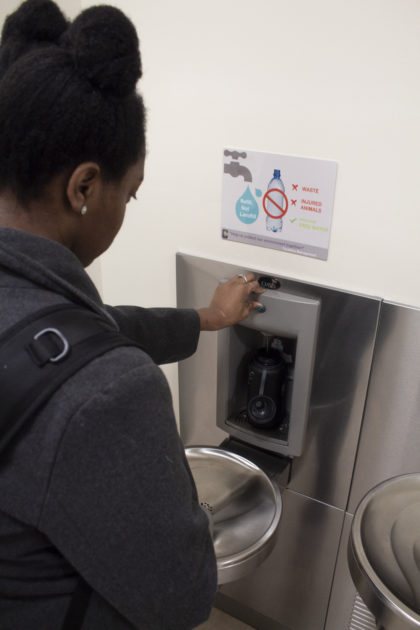Reduce, reuse, and recycle: accompanied by a cheery bright-green triangle of arrows, it’s a slogan that has been drilled into the minds of the public for over a decade.

Waste containers for recycling have been added beside their landfill counterparts, and dropping an empty plastic water bottle into a recycling bin has become second nature. It’s a way for us to feel better about the plastic waste vortex in the Pacific Ocean without altering our day-to-day habits in any significant way.
Of course, recycling is intended to be the last resort of resource conservation. First, an effort should be made to reduce the amount of waste we produce and reuse objects wherever possible. For example, purchasing a reusable water bottle is better for the environment than recycling 75 plastic ones.
Only if it is absolutely necessary for a single use container to be disposed of should it be recycled.
The rate of recycling has grown steadily in the United States. According to a 2015 Environmental Protection Agency overview on materials, wastes, and recycling, the amount of municipal solid waste that is recycled has risen from 69.5 million tons in 2000 to 91.2 million tons in 2015.
This sounds promising, of course, but one thing that many consumers fail to consider is how their recycling is actually being processed.
For decades, China accepted the recyclables of the world. Millions of tons were shipped overseas by the United States and other countries, and low-wage workers did the dirty work of cleaning and sorting the waste. For American waste disposal companies, it was a quick, easy, and cheap solution.
But in July 2017, the World Trade Organization reported that China was no longer open to accepting all types of solid waste for recycling, and what they were willing to receive was subject to strict contamination standards.
As the Chinese economy had shifted, recycling the garbage of the world was no longer a crucial and profitable industry — besides, the country is faced with a growing amount of their own waste to dispose of.
This caused turmoil in the American waste disposal sector. Suddenly, getting rid of those bins of plastic and paper was not as easy as shipping them over to China.

In July 2019, the Planet Money podcast of the National Public Radio service ran an episode entitled “So, Should We Recycle?” As the title implies, the issue of recycling may not be as clear-cut as it is believed.
The podcast includes a shocking interview with a waste distribution manager in Arizona; his company no longer recycles, and instead sends the collected plastics and papers to a landfill with all of the other garbage.
Although the customers still believe they are recycling, they are just pointlessly separating their trash for it to be recombined later.
This paints a pretty bleak picture of the recycling ideal, but on the university’s campus, conservation efforts are defying this curve.
The university’s trash is processed by Waste Management, the largest residential recycler in the United States. In the 2018 Sustainability Report, Waste Management CEO Jim Fish acknowledged the hardships that were caused by China’s sudden withdrawal from the recycling industry.
He wrote that the company is shifting its focus to “ … recycling the right things well to ensure optimal environmental and economic outcomes.”
In 2017, despite any restrictions or limitations, Waste Management processed 15.3 million tons of recycling at over 100 different United States facilities.
Another campus recycling initiative is through the PepsiCo Zero Impact Fund. Youting Chen, a sustainability intern working with the Facilities Management Office, is responsible for submitting the university’s application, which was awarded a grant of $10,000, the maximum amount for a single year.
Already, this money has been used to purchase the new blue recycling bins that can be spotted outside on campus, and Chen said that she plans to create signs detailing the materials that can be recycled to post near these receptacles.


